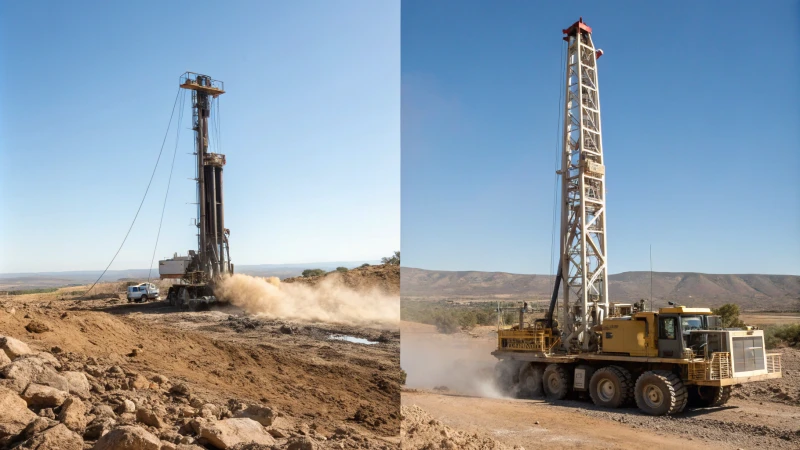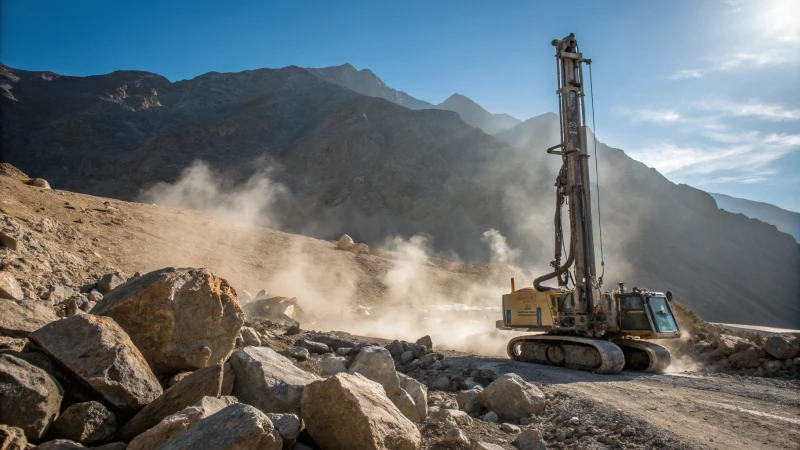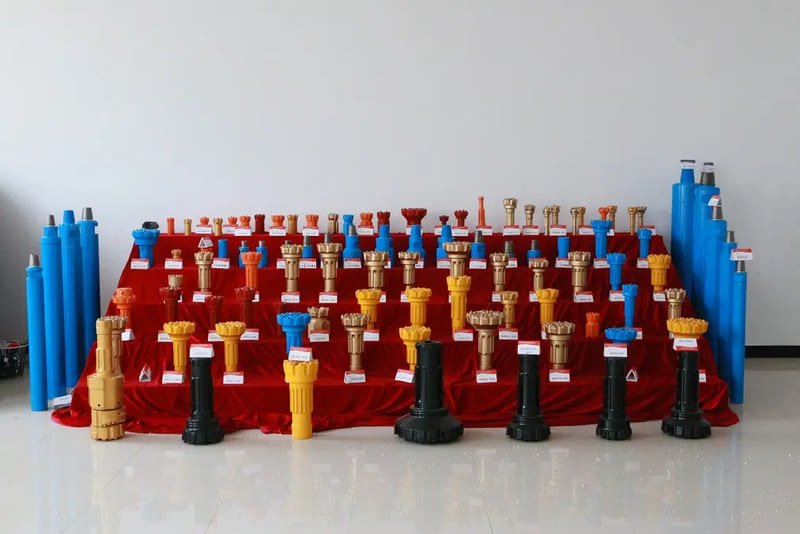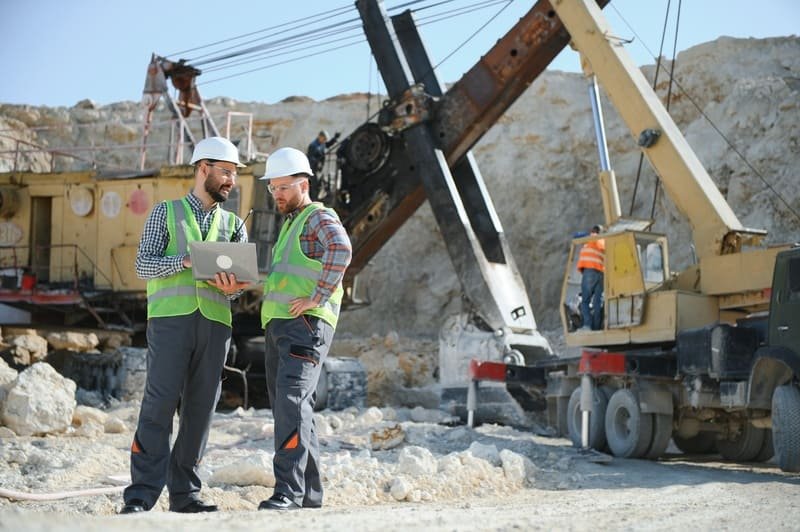Imagine smashing through the hardest rocks easily. DTH drilling allows this!
DTH drilling increases efficiency in hard rock. The hammer sits directly behind the drill bit. This position enables optimal energy transfer. Faster penetration rates occur. There is less vibration. Holes end up straighter than with traditional methods.
I remember when I first saw DTH drilling. It was like watching a dance of precision and power. The hammer strikes directly behind the bit. This felt almost poetic to me. This design really minimizes energy loss. Every strike really counts. Working with hard rock is a challenge. Every advantage is helpful. DTH’s direct energy transfer changes everything. It feels like having a superpower. You conquer the toughest terrains with minimal effort. Reduced vibration protects the equipment. It also makes holes straighter and more accurate. This technology truly speaks to innovation in our industry.
DTH drilling reduces vibration in hard rock formations.True
DTH drilling's design minimizes vibration by placing the hammer directly behind the drill bit.
Traditional drilling has higher penetration rates than DTH.False
DTH drilling offers higher penetration rates due to direct energy transfer.
Why is DTH Drilling Perfect for Hard Rock?
Have you ever thought about why DTH drilling looks like the superstar of drilling in hard stones?
DTH drilling works well in hard rock. It transfers energy efficiently with special bits and uses a pneumatic system. This method drills quickly. It works even at great depths. It reduces vibration. This technique probably becomes the top choice for tough terrains.

Direct Energy Transfer
The magic of DTH drilling is in its direct energy transfer. Imagine a hammer right behind the drill bit. It’s like having the power exactly where it’s needed. This setup reduces energy loss and delivers high-frequency blows that break rocks easily. It's not about grinding them; it shatters them into pieces.
| Feature | Benefit |
|---|---|
| Hammer Location | Minimizes energy loss |
| Percussive Action | Direct impact on rock face |
| Efficient Breaking | Breaks rock, not grind |
Design Advantages
I love the DTH system for its design - smart and practical. Compressed air in this system keeps it running smoothly and clears out debris too. Here's the best part: you can change the bits for any geological challenge. Fewer vibrations also mean the equipment stays newer, longer.
- Pneumatic System: Uses compressed air for strong power.
- Customizable Bits: Tailored designs for different geology.
- Reduced Vibration: Less wear on equipment.
Performance in Hard Rock
DTH drilling shows its strength with high penetration rates and performs well even when other methods struggle. It drills straighter holes with less deviation, making it very valuable in hard rock areas.
- High Penetration Rates: Faster in tough formations.
- Depth Capability: Works well in deep drilling.
- Hole Straightness: Very little deviation.
Operational Benefits
DTH drilling uses less air, which saves money. The steady force on the drill bit means it lasts longer, which is very helpful in tough conditions. Its ability to adapt to different hardness levels is another plus.
- Lower Air Consumption: Saves money.
- Extended Bit Life: Lasts longer in hard conditions.
- Versatility: Works well in different hardness levels.
Understanding these benefits is important for anyone in mining or construction. Learning more about pneumatic systems1 or the latest DTH innovations could really help you master this field.
DTH drilling minimizes energy loss in hard rock.True
The hammer's position behind the drill bit ensures efficient energy transfer.
DTH drilling uses hydraulic systems for power.False
DTH drilling utilizes a pneumatic system powered by compressed air.
How Does DTH Drilling Compare to Rotary Drilling?
Entering the world of drilling was confusing at first. Selecting between DTH and rotary methods seemed like choosing the right tool for an unknown task.
DTH (Down-the-Hole) drilling uses a hammer that strikes downwards. This action is perfect for drilling hard rock. Rotary drilling uses continuous rotation of the drill bit. It is ideal for softer ground. DTH provides faster drilling speed. It really can drill deep holes with high accuracy. Very accurate.

Understanding the Basics
When I learned about DTH drilling, it felt like finding a powerful tool for tough rocks. This method uses a pneumatic hammer directly behind the drill bit. It impressed me with how it transfers energy efficiently, similar to a perfect punch in boxing. Rotary drilling is different; it spins the bit to grind rocks, working better on soft formations. DTH drilling seemed like a hero in hard terrains—a real hero for tough places. Learn more about DTH hammers2.
| Feature | DTH Drilling | Rotary Drilling |
|---|---|---|
| Mechanism | Percussive hammer action | Continuous rotation |
| Ideal Terrain | Hard rock formations | Soft to medium ground |
| Speed | High penetration rates | Slower in hard formations |
| Accuracy | Greater depth precision | May deviate over longer holes |
Performance Factors
I remember watching a DTH drill. It moved fast and hit rocks precisely, even the hardest ones. This speed was due to direct energy transfer from hammer to bit, minimizing energy loss. Rotary drilling felt like handling a gentle giant, good for soft lands where grinding works well. The choice of method depends on the ground's hardness.
Operational Considerations
DTH drilling has a big advantage: less vibration, which extends equipment life and saves money over time. The pneumatic system clears debris efficiently, maintaining steady drill speed. However, rotary systems might suffer more wear and tear and require more care. Explore rotary system maintenance3.
Cost Implications
At first, I thought DTH drilling would be expensive due to equipment and air compression costs. However, projects finish faster with less equipment wear, potentially resulting in lower total costs under the right conditions. On soft, wide areas, rotary drilling seems cheaper and might be friendlier on the budget. Compare cost efficiencies4.
DTH drilling is ideal for soft ground.False
DTH drilling is best for hard rock formations due to its percussive action.
Rotary drilling requires more maintenance.True
Continuous wear on parts in rotary systems leads to higher maintenance needs.
How Can DTH Drilling Save You Money?
Have you ever stood before a huge rock wall, wondering how to deal with it without spending too much money? Here’s how DTH drilling really transforms that challenging mission into an affordable success.
DTH drilling lowers energy loss and reduces equipment wear. It increases drilling efficiency, providing big cost savings. Its design allows for quicker penetration and lower operating costs. This is especially true in hard rock areas.

Direct Energy Transfer Efficiency
When I first discovered DTH drilling, I doubted it. Cutting costs while dealing with hard rocks seemed impossible. But I changed my mind after understanding its mechanics and seeing it work.
DTH drilling's design ensures that energy is directly transferred to the drill bit, minimizing energy loss5 during transmission. This efficient energy transfer results in less power consumption, which translates into lower fuel costs for operators.
- Hammer Location: Positioned directly behind the drill bit, the DTH hammer delivers percussive blows efficiently.
- Reduced Energy Waste: Unlike rotary methods that grind rock, DTH's percussive action breaks it directly.
Design Benefits and Operational Savings
DTH's pneumatic system acts like a versatile tool. It powers the hammer and clears out debris at the same time, simplifying tasks. This means less damage and fewer maintenance issues later.
| Design Feature | Cost Benefit |
|---|---|
| Pneumatic System | Lower air consumption |
| Customizable Bits | Optimized performance |
| Reduced Vibration | Less equipment wear |
High Performance in Tough Rock
DTH excels in difficult situations. I saw it shine at a site where other methods failed, yet DTH continued with impressive speed and accuracy.
In hard rock formations, DTH drilling achieves higher penetration rates compared to other methods. This speed reduces the overall time required for drilling projects, thus lowering labor costs.
- Depth Capability: Maintains efficiency at greater depths where other methods falter.
- Straight Holes: Results in minimal hole deviation, reducing the need for corrective drilling.
Versatility and Long-Term Savings
DTH isn't just for quick savings. Its adaptability to different rock types means fewer tools are necessary for each project, which cuts initial costs.
DTH systems' versatility allows them to handle various rock hardness levels effectively, making them suitable for diverse applications. This adaptability reduces the need for multiple types of drilling equipment, thus saving on initial investment costs.
- Extended Bit Life: Consistent force application prolongs bit life, decreasing replacement frequency.
- Wide Range Efficiency: Drills through varying hardness levels without necessitating different tools.
In conclusion, DTH drilling offers more than just a technique; it represents an investment in reliability and efficiency. Explore further6 to discover its benefits for your projects.
DTH drilling uses less power than rotary methods.True
Direct energy transfer to the drill bit minimizes energy loss, reducing power consumption.
DTH systems require frequent equipment maintenance.False
The pneumatic system reduces equipment wear, lowering maintenance costs over time.
How Do Customizable DTH Bits Boost Drilling Performance?
I remember the first time I discovered customizable DTH bits. It felt like I had found a secret weapon for drilling.
Customizable DTH bits increase drilling success. They adjust to specific ground conditions. This flexibility probably results in better drilling speed. They also experience less wear. Operational efficiency gets a real improvement. These bits excel in difficult environments.

Advantages of Customizable DTH Bits
Imagine you're on a drilling site, facing very tough geological challenges. The rock seems to mock your efforts. With customizable DTH bits, you choose features that match these tough conditions perfectly. This flexibility helps you improve drilling speed7 and reduce tool wear. Cost savings come over time. Every rock type is unique. These bits let you adjust button shapes and gauge designs to handle them directly.
Adjusting to Geological Conditions
Customizable DTH bits adapt really well to various geological settings. In hard rock areas, a bit with a special button setup improves energy transfer8 efficiency significantly. I've seen how this delivers straighter holes with less deviation, which is crucial for precision drilling tasks.
Improved Operational Efficiency
Using custom DTH bits reveals a big difference in operational efficiency. Options like changing the carbide grade and modifying face designs decrease vibration and stabilize the bit too. This not only lengthens the bit's life but also lowers maintenance needs.
| Feature | Benefit |
|---|---|
| Tailored Button Profile | Improved rock penetration and reduced wear |
| Customized Face Design | Enhanced cutting action, suited to specific rock types |
| Specialized Gauge Design | Greater hole straightness and minimal deviation |
Operations run much smoother when equipment doesn't always need your attention.
Cost Savings Through Longevity
Thinking about long-term drilling costs, investing in customizable DTH bits becomes a smart choice. Fewer replacements lead to less downtime and increased productivity. Picking the right configurations for each project greatly extends the lifespan of your drilling tools.
Flexibility Across Different Uses
Customizable DTH bits work very well in many jobs. They suit various fields, from mining and construction to oil and gas exploration. It's like having a Swiss army knife in your drilling toolkit - always ready while maintaining top performance standards.
Customizable DTH bits improve penetration rates.True
Customizable designs optimize cutting mechanisms for specific rock types.
DTH bits cannot be used in oil and gas exploration.False
Versatility allows DTH bits to be used across various sectors, including oil and gas.
Conclusion
DTH drilling enhances efficiency in hard rock formations through direct energy transfer, reduced vibration, and customizable bits, resulting in faster penetration rates and lower operational costs.
-
Explore how pneumatic systems contribute to DTH drilling's efficiency and cost-effectiveness. ↩
-
Understanding the benefits of DTH hammers can help optimize drilling operations in tough geological conditions. ↩
-
Rotary system maintenance is essential for operational efficiency; discover key maintenance practices. ↩
-
Evaluating costs helps in choosing the most economical drilling method for your project. ↩
-
Learn about the energy-saving benefits of DTH drilling and how it reduces operational expenses. ↩
-
Explore detailed insights into how DTH drilling economically benefits mining operations. ↩
-
Discover how altering DTH bit designs can lead to higher penetration rates and efficiency. ↩
-
Learn how specific bit configurations enhance energy transfer for effective drilling. ↩








